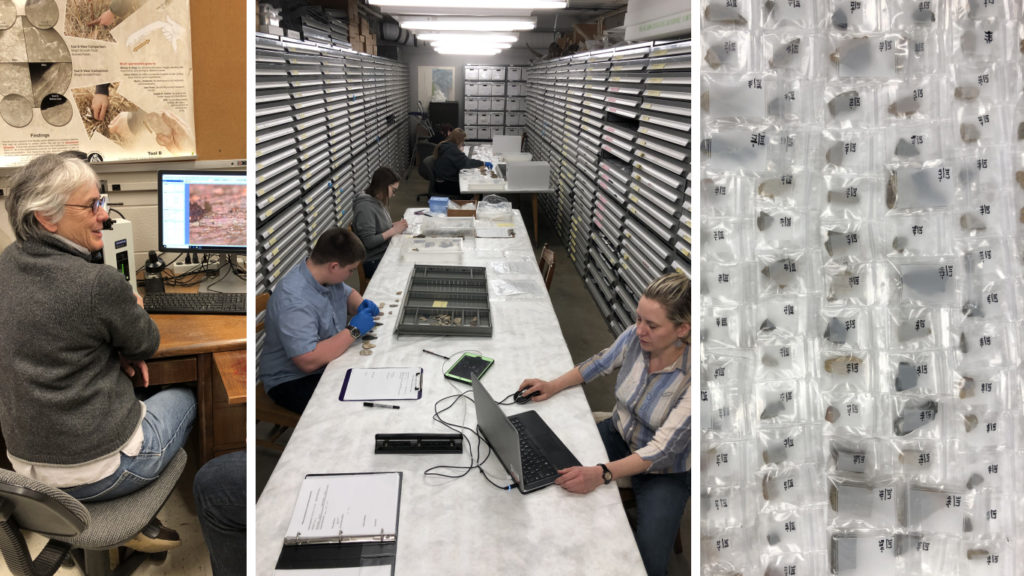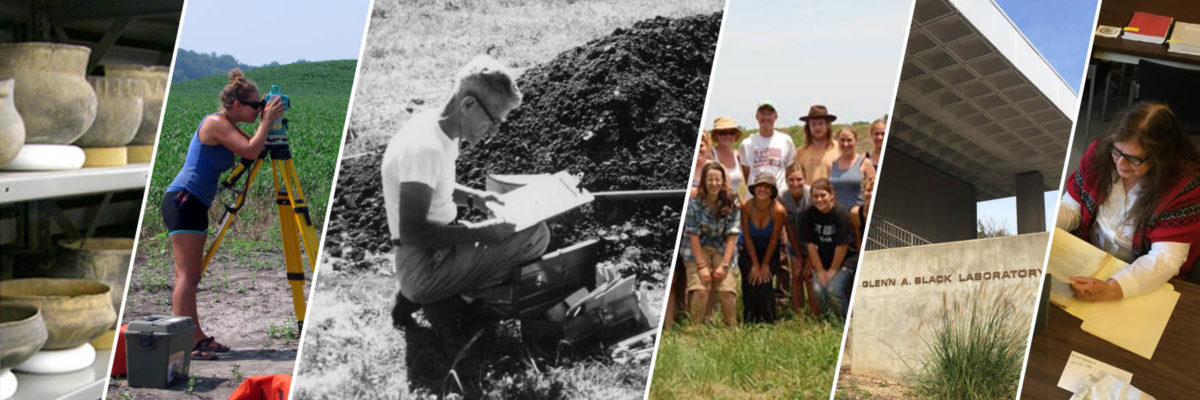
This is the last newsletter before we officially merge with the Mathers Museum of World Cultures to become the Indiana University Museum of Archaeology and Anthropology (IUMAA). While the GBL will retain its identity and spirit as part of the IUMAA, this seems somehow like a moment to pause, if only for a second. We really have not had much time to reflect on all the changes that are rapidly taking place with the flurry of packing, tracking, moving, lifting, bar coding, and ordering supplies (more carts please!). A pandemic was certainly not part of the plan. But here we are. I was a student at IU in the 1970s and had the good fortune to work on projects and collections at the GBL. One of the best parts of my job now as Curator is working with students who are just starting their careers. The few times I have been in the building since closing reminds me of just how important all of our graduates, students and volunteers are to the work we do. They truly are the backbone of the place, and for me the inspiration to get through all of the packing, moving, rebuilding, restructuring, and merging. When we reopen, the GBL will be an improved laboratory for learning, exploring and research. Despite the flurry of the BIG MOVE OUT, we also managed to conduct some business as usual:
- We began the second year of the three-year IMLS/SAT Grant – Curating Angel Mounds Legacy Collections. The faunal collection rehousing was completed and by March 12 we had rehoused 12% of the ceramic collection boxes. By March 12, 359 rehoused Angel boxes were deposited at the new IU repository, ALF3.
- We continued to provide curation services for collections under a cost share agreement between USDA Forest Service, Hoosier National Forest and IU/GBL.
- We facilitated transfers and documentation work for IU NAGPRA and Hoosier National Forest.
- The registrar team continued work on accession files.
- We accepted two donations. From the Arkansas Archaeology Survey, Parkin Archaeological State Park, on behalf of Robin Gay Walker of Wilsonville, Oregon, we received a stone pipe from the Bone Bank site. From IU alum, Kenneth Tankersley, University of Cincinnati, Department of Anthropology and Geology we accepted items from his research at the GBL, including color slides from 1984 excavations at the Arrowhead Arch site and speleothem petrographic thin sections from Wyandotte Cave.
- We facilitated access to the collections for three visiting researchers. Cheryl Munson, Indiana University, Department of Anthropology selected carbonized botanical samples from Wyandotte Cave for identification and carbon dating. Munson also conducted research on aragonite pipe fragments from the Mann site and Arrowhead Arch. Pat Trader, Gray and Pape, Inc. conducted comparative research on partially reconstructed ceramic vessels and sherds from the Martinsville Plaza site (12Mg52) comparing them to ceramics from other recently excavated Oliver Phase sites in the White River valley. PhD student and GBL Assistant Curator, Amanda Burtt, initiated exploratory research to study the diets and health of dogs from Angel Mounds. Melody Pope provided exploratory work and training in the Materials Science lab for IU graduate student Ryan Peterson who is researching ancient copper technologies (Figure 1). These varied research efforts are exciting and demonstrate the breadth of the GBL collections and the kinds of research they support.
- As for the Big Move Out, 3,757 boxes have been deposited at ALF3, and one quarter of the type collection has been packed. This was a huge effort and accomplishment on the part of the GBL collections team (Figures 2, 3, and 4).
A BIG THANK YOU to the entire GBL collections and registration team!!
Melody Pope, Curator of Collections

